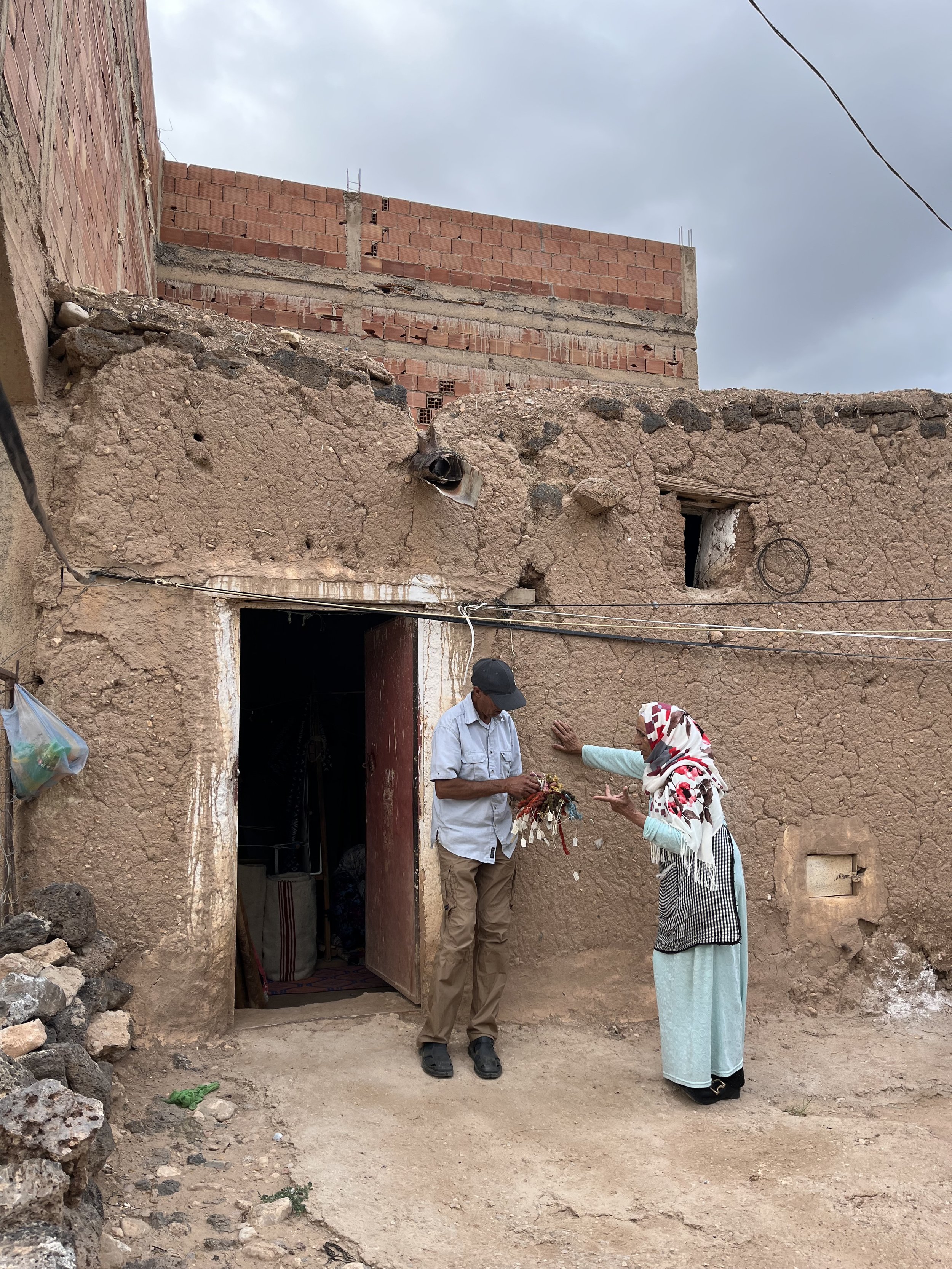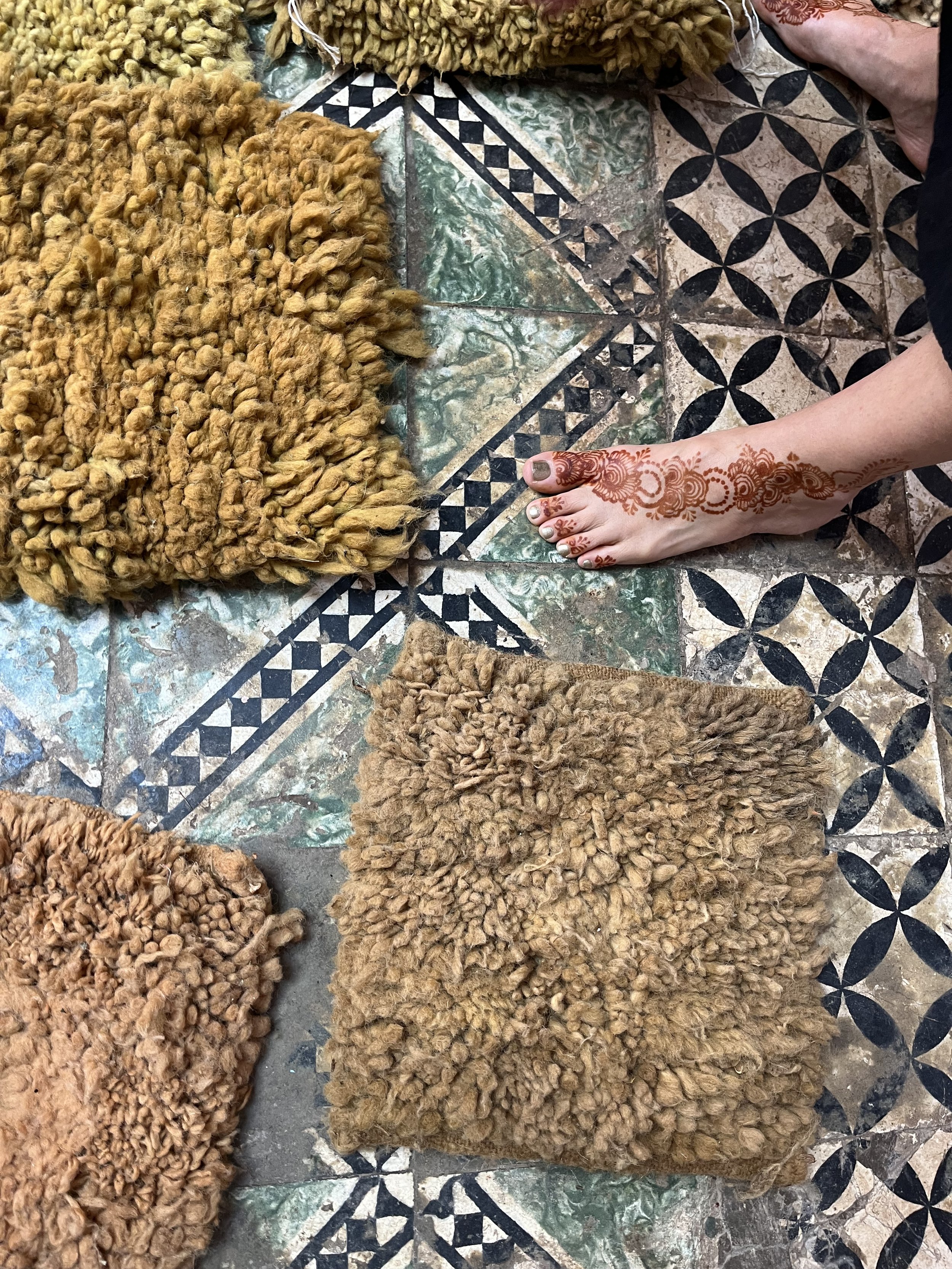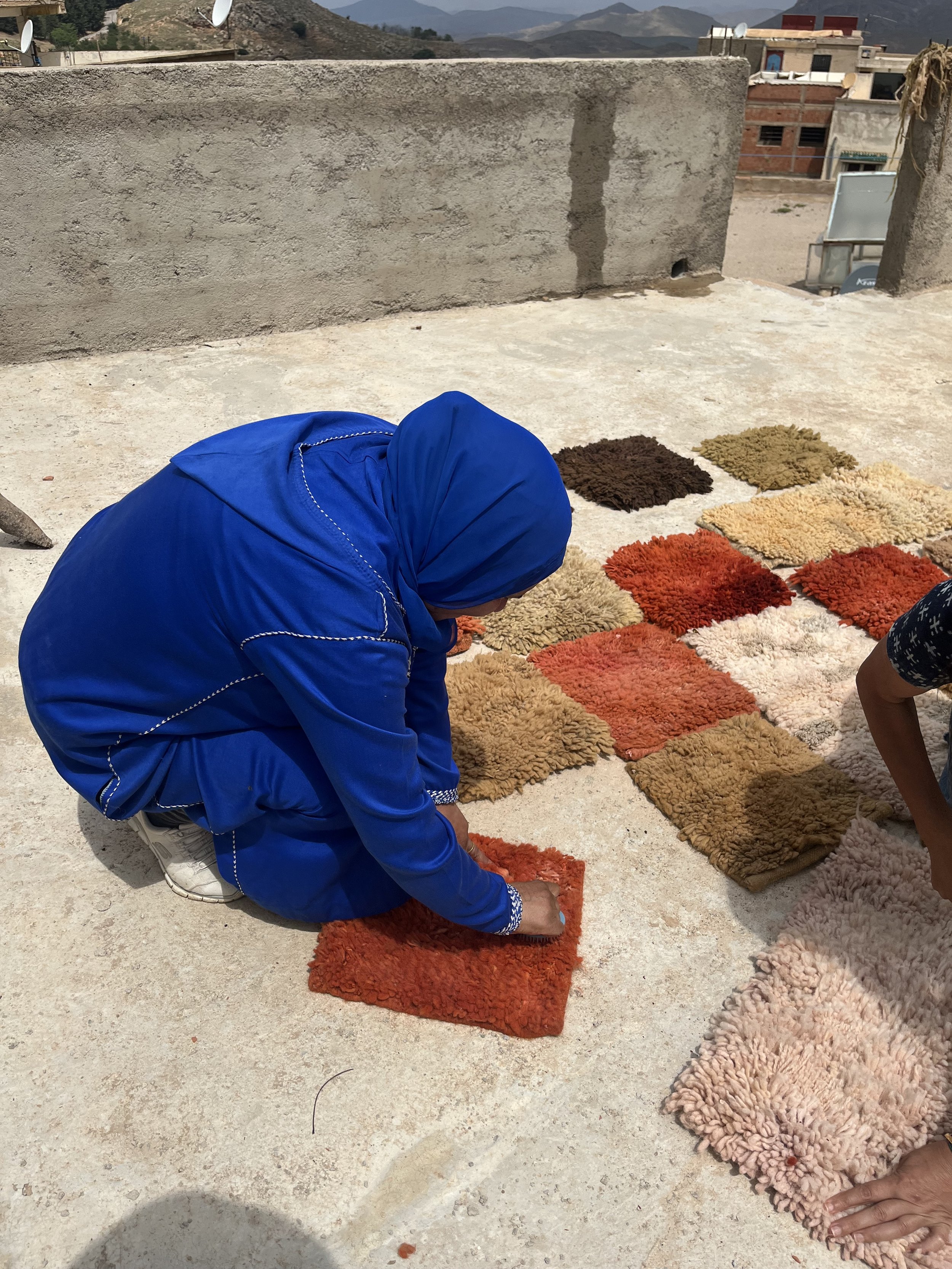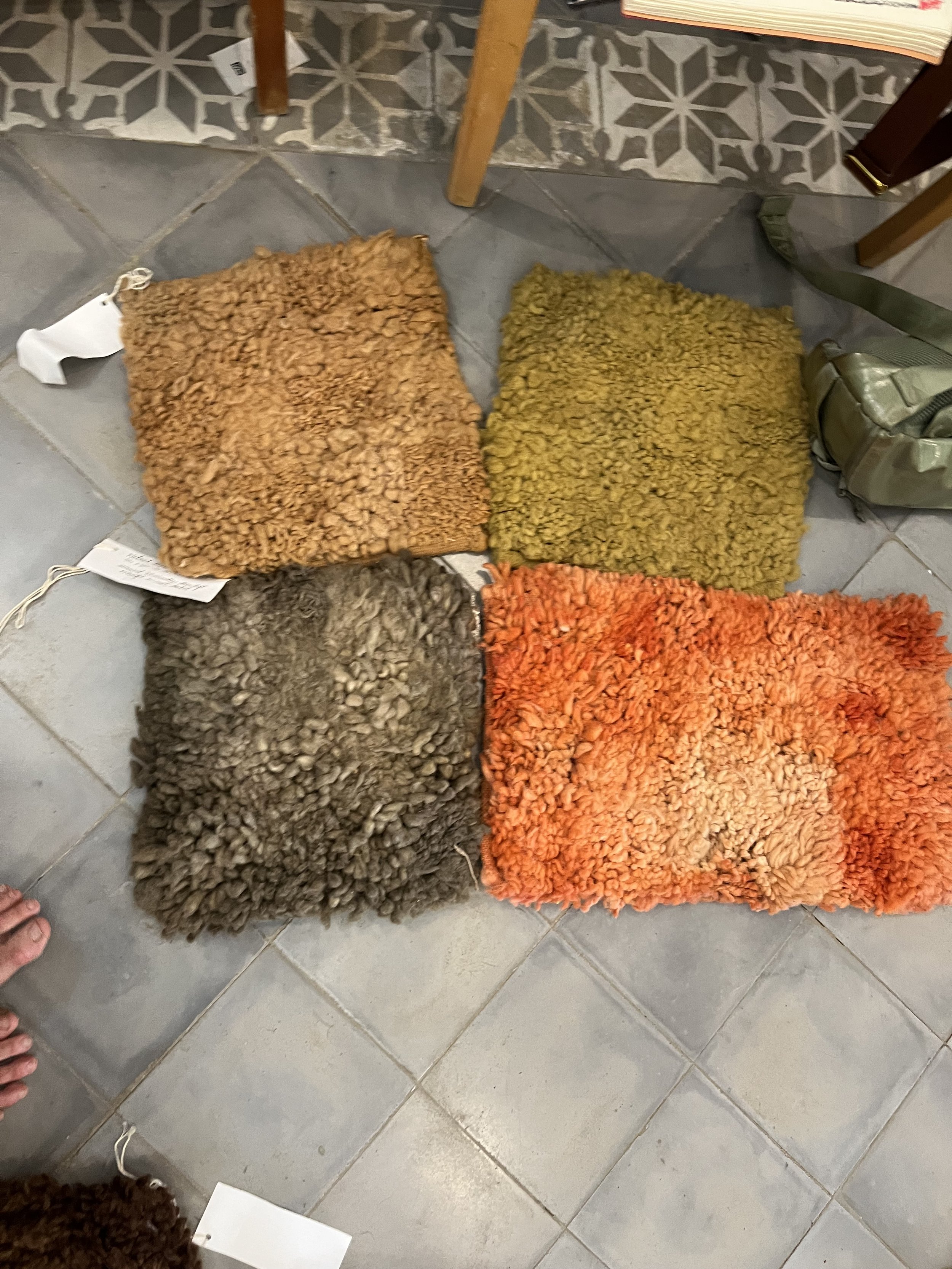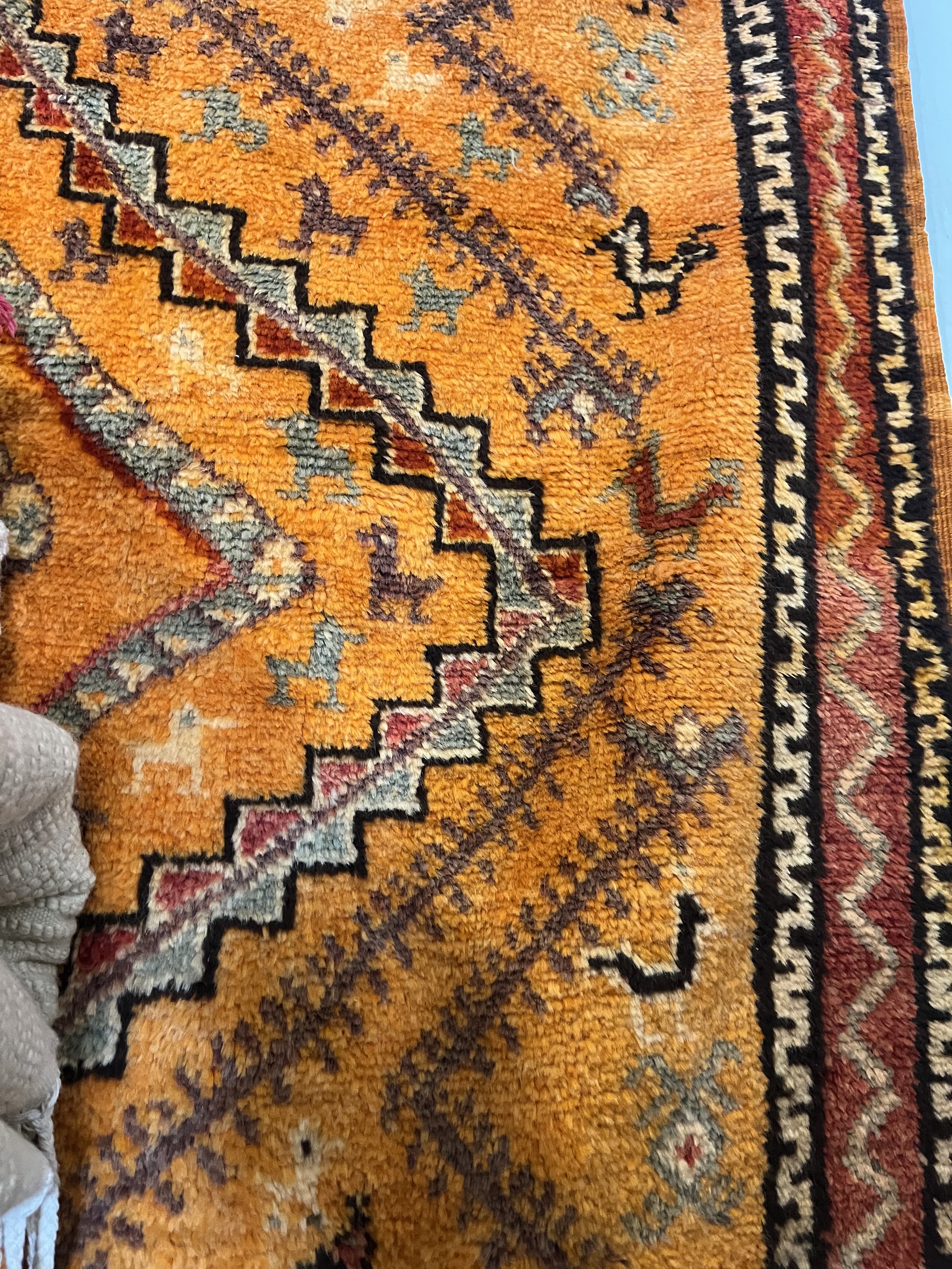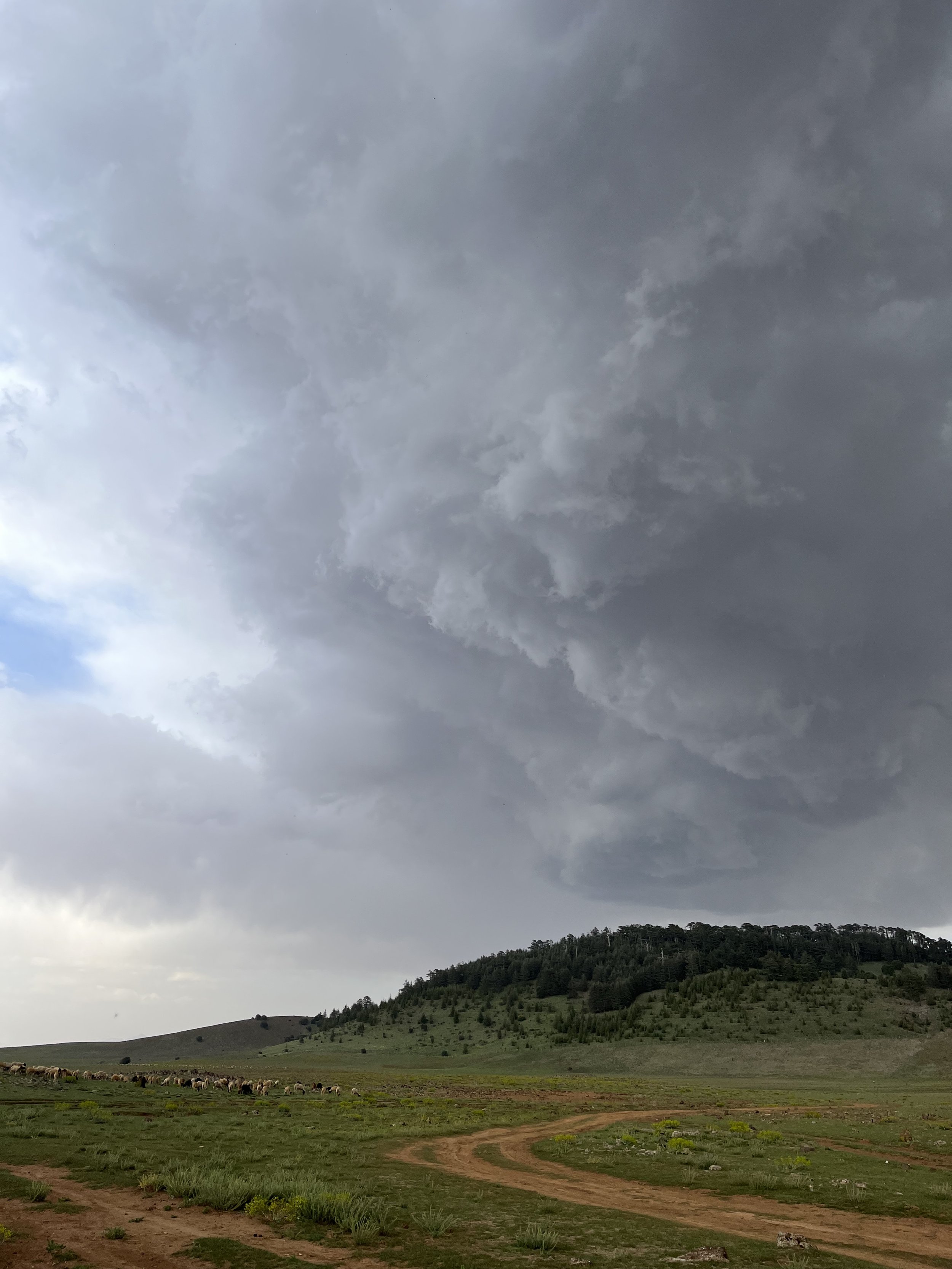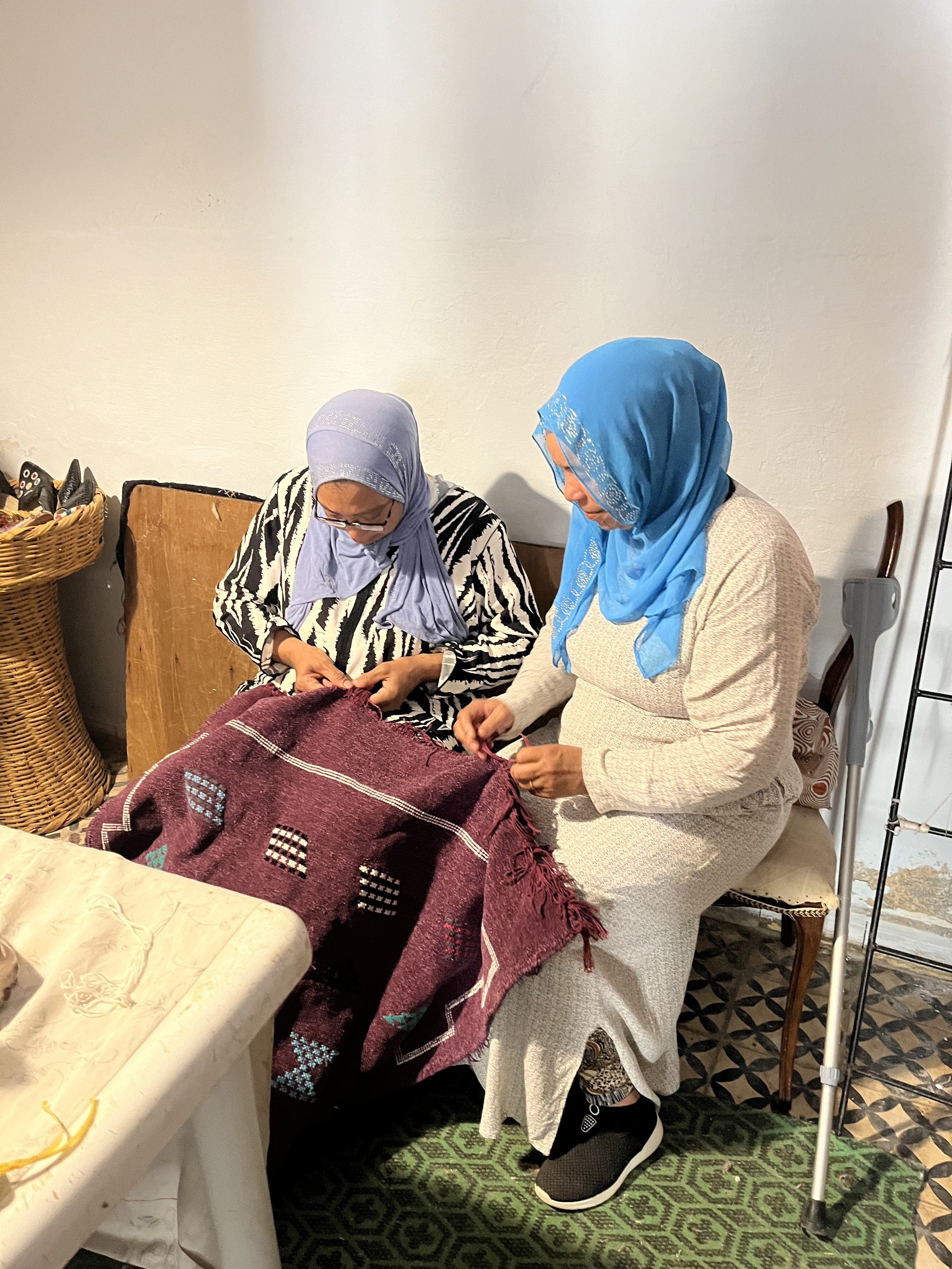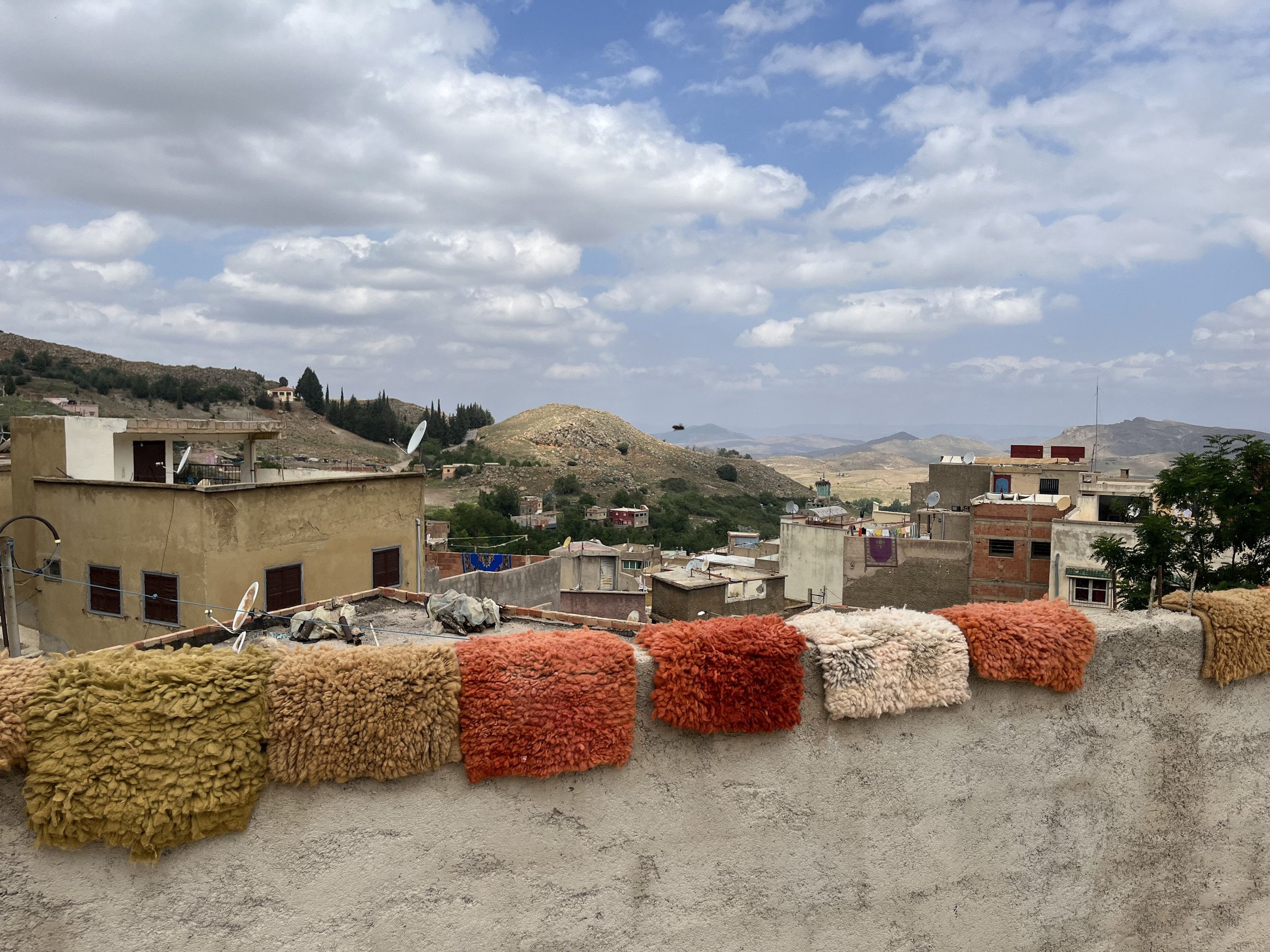
Discovering sources of natural dyes from microbes and plants for the carpet-weaving community of Morocco
We teamed up with an international team of artists, scientists, storytellers and weavers to discover new sources of natural dyes from microbes and plants to help the carpet weaving community of Morocco create more environmentally friendly carpets.
The problem: Pollution
Most carpets are dyed with synthetic dyes. These dyes are often petroleum-based products that are toxic to the environment and to the weavers and dyers who use them.
The solution: Natural Dyes
Microbes and plants are sources of natural dyes. In 2023—as an extension of our Purple Microbe Project— we teamed up with Brooke Jude (of Bard College), the textile nonprofit ATW80Fabrics, and an international team of scientists, artists, and weavers to find plants and new microbes as sources of natural dyes for the carpet weaving community of Morocco.
The Ain Leuh Cooperative
Our team included the women’s Ain Leuh Cooperative, a women-led group of weavers based in the rural Middle Atlas Mountains of Morocco. These women use traditional methods to create carpets available to international audiences thanks to the work of our partner, Nina Mohammad of the Morocco-based Artisan Project.
Our discovery expedition
At The Microbe Institute, we led the microbial discovery efforts with our partner, Brooke Jude of Bard College, and our Morocco-based colleagues. We surveyed water, plant, and soil microbial communities across the Northern half of Morocco—scaling 2000 meters in elevation. In our committment to conserve microbial diversity and empower local communities, we worked with the Morocco Culture Collection to ensure the microbes we characterized would remain in Morocco.
Our impact
As a broader team, we created an open-source book on the science of natural dyes, the stories of the broader Moroccan weaving community, and protocols to enable any weaver to use natural dyes. Thanks to the work of our high school interns, these books are now available in English and Arabic. We identified various pigmented microbes, which we will continue to characterize as we work with our Moroccan colleagues on capacity-building efforts. We presented our work, and the role of beneficial microbes in creating innovative technology at a National Conference on the Science of Sports at L’Institut Royal de Formation des Cadres in Morocco.

“By identifying these microbes—and working with our local colleagues to secure them in public respositories—we are coupling conservation to technology innovation.
The microbes we collect today are ancient creatures, but may be sources of natural dyes of the future.”
— Anne A. Madden, Ph.D. The Microbe Institute
Supporting our local colleagues
Thanks to earmarked donations from our supporters, in addition to in-kind support from our partner, Bag Balm, we were able to provide requested back braces, medications, and hand lotions to the Ain Leuh weavers. Funding for this project came from a grant from Daughters for Earth (One Earth) to ATW80Fabrics (with the proposal co-written by Anne A. Madden, Ph.D. of The Microbe Institute.)
Thanks to our Partners & Supporters
Media Coverage





